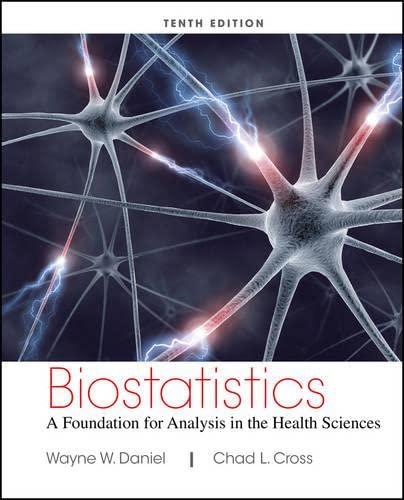One purpose of a study by Connor et al. (A-8) was to examine reactive aggression among children
Question:
One purpose of a study by Connor et al. (A-8) was to examine reactive aggression among children and adolescents referred to a residential treatment center. The researchers used the Proactive/Reactive Rating Scale, obtained by presenting three statements to clinicians who examined the subjects. The respondents answered, using a scale from 1 to 5, with 5 indicating that the statement almost always applied to the child. An example of a reactive aggression statement is, “When this child has been teased or threatened, he or she gets angry easily and strikes back.” The reactive score was the average response to three statements of this type. With this variable as the outcome variable, researchers also examined the following: AGE (years), VERBALIQ (verbal IQ), STIM (stimulant use), AGEABUSE (age when first abused), CTQ
(a measure of hyperactivity in which higher scores indicate higher hyperactivity), TOTALHOS
(total hostility as measured by an evaluator, with higher numbers indicating higher hostility).
Perform stepwise regression to find the variables most useful in predicting reactive aggression in the following sample of 68 subjects.
REACTIVE AGE VERBALIQ STIM AGEABUSE CTQ TOTALHOS 4.0 17 91 0 0 0 8 3.7 12 94 0 1 29 10 2.3 14 105 0 1 12 10 5.0 16 97 0 1 9 11 2.0 15 97 0 2 17 10 2.7 8 91 0 0 6 4 2.0 10 111 0 0 6 6 3.3 12 105 0 0 28 7 2.0 17 101 1 0 12 9 4.3 13 102 1 1 8 11 4.7 15 83 0 0 9 9 4.3 15 66 0 1 5 8 2.0 15 90 0 2 3 8 4.0 13 88 0 1 28 8 2.7 13 98 0 1 17 10 2.7 9 135 0 0 30 11 2.7 18 72 0 0 10 9 2.0 13 93 0 2 20 8 3.0 14 94 0 2 10 11 2.7 13 93 0 1 4 8 3.7 16 73 0 0 11 11 2.7 12 74 0 1 10 7 2.3 14 97 0 2 3 11 4.0 13 91 1 1 21 11 4.0 12 88 0 1 14 9 4.3 13 90 0 0 15 2 3.7 14 104 1 1 10 10 3.0 18 82 0 0 1 7 4.3 14 79 1 3 6 7 1.0 16 93 0 0 5 8 4.3 16 99 0 1 21 11
Step by Step Answer:

Biostatistics A Foundation For Analysis In The Health Sciences
ISBN: 9781118302798
10th Edition
Authors: Wayne W. Daniel, Chad L. Cross






